Spotify Wrapped is all about celebrating the fans, artists, authors, podcasters, and creators who made 2024 the record-breaking, culture-making, fandom-shaking year it was. And this year, we’re celebrating this cultural moment that’s driven by the passion of hundreds of millions of fans around the world.
Wrapped has continued to command a global spotlight as artists, genres, and trends break into new spaces like never before. This includes:
- Pop stars like Chappell Roan, Shaboozey, and Sabrina Carpenter rocketing to the top of our charts.
- Genres like country crossing over like never before in the capable hands of artists such as Beyoncé, Shaboozey, Lana Del Rey, and Post Malone.
- Indie acts like Clairo, Mk.gee, and The Marías garnering both critical acclaim and streaming success.
- Collaborations between artists (e.g., Billie Eilish and Charli xcx, Lady Gaga and Bruno Mars, and Beyoncé and Miley Cyrus), creating some of the most-talked-about culture-shifting moments of the year.
- The notable success and growth of female artists, specifically on our top albums list, where women hold eight of the spots in the top half of the list.
- “Die With A Smile” by Bruno Mars and Lady Gaga taking the top spot as the song most frequently shared from Spotify to social platforms; “BIRDS OF A FEATHER” by Billie Eilish coming in at number two, and “Beautiful Things” by Benson Boone, “Lose Control” by Teddy Swims, and “Good Luck, Babe!” by Chappell Roan rounding out the top five. (See below for the full Top 10 list.)
In the world of podcasts, we have seen the growth of incredible fandoms across sports, comedy, and true crime in 2024. In fact, more than half a billion people have listened to a podcast on Spotify since we entered the space in 2019. And with more than 300,000 video podcasts soaring on Spotify in markets where they’re available, we saw fans enjoy the diversified way they consume content more than ever this year.
It’s also been a year since we launched Audiobooks in Premium (now available in the U.S., Canada, U.K., Ireland, Australia, New Zealand, France, Belgium, the Netherlands, and Luxembourg), and we’ve seen both new releases and back-catalog titles from notable authors garner new audiences across every genre on Spotify. To mark this big milestone, we’re thrilled to release our Global Top Audiobooks of the Year list for the first time ever, led by 2024’s buzziest author, Sarah J. Maas, and her A Court of Thorns and Roses series.
But there’s so much more that happened over the course of the year. Keep reading to discover the artists, songs, albums, and podcasts that topped our lists in 2024, and find out how they compare to your personalized Wrapped experience.
The top global artist of 2024

With more than 26.6 billion streams globally, Taylor Swift is Spotify’s 2024 Global Top Artist.
To celebrate Taylor’s monumental achievement, fans will see a first-ever special badge on her Spotify artist profile. Swifties from around the globe can be on the lookout for a special surprise to celebrate their fandom soon!
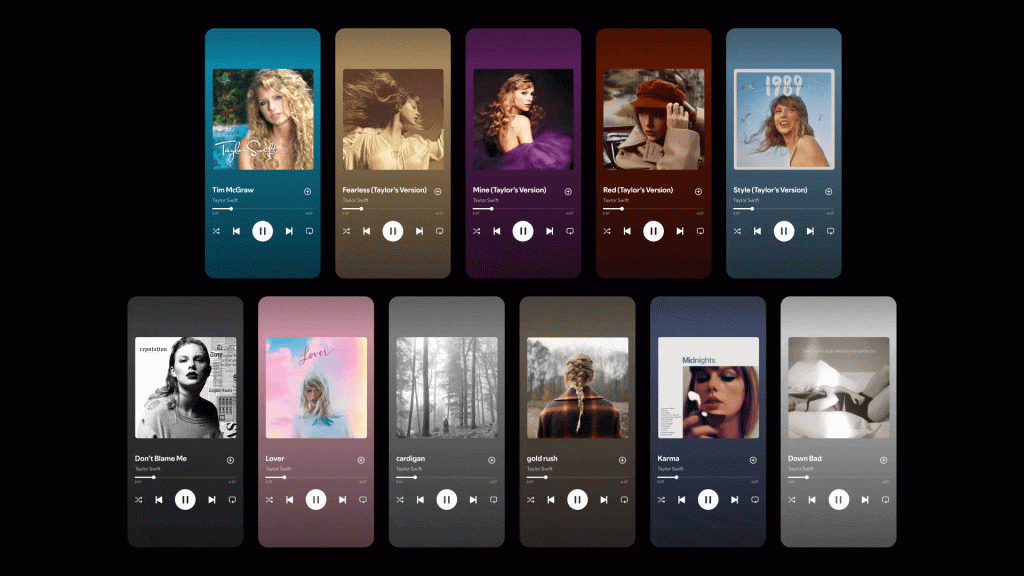
Most-Streamed Artists Globally in 2024
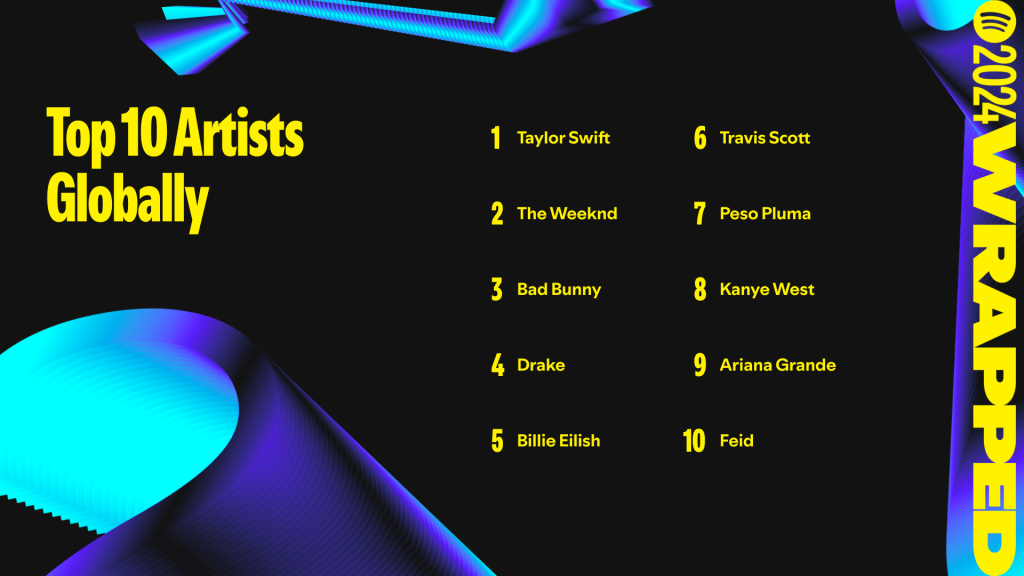
- Taylor Swift
- The Weeknd
- Bad Bunny
- Drake
- Billie Eilish
- Travis Scott
- Peso Pluma
- Kanye West
- Ariana Grande
- Feid
Most-Streamed Songs Globally
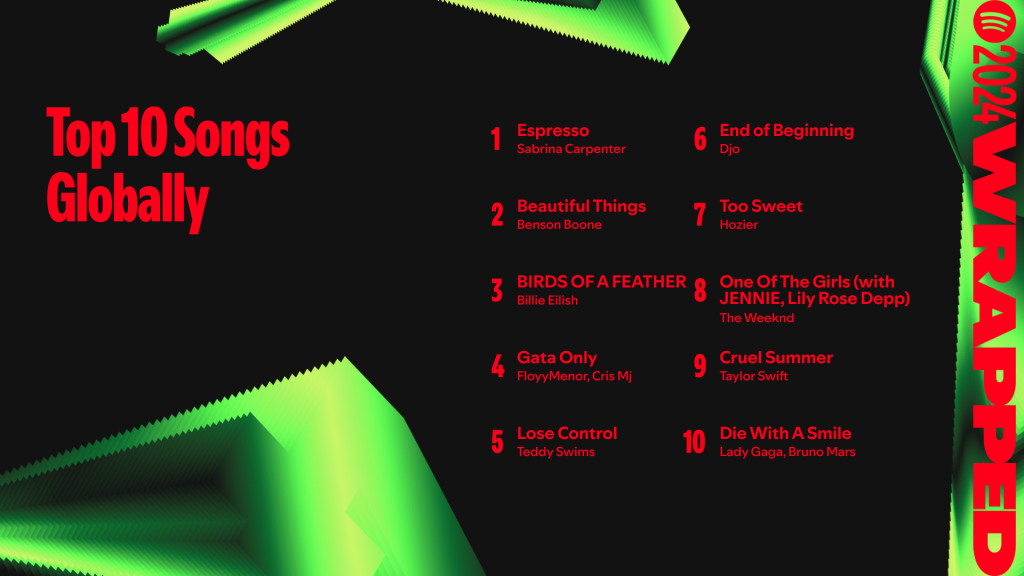
- “Espresso” by Sabrina Carpenter
- “Beautiful Things” by Benson Boone
- “BIRDS OF A FEATHER” by Billie Eilish
- “Gata Only” by FloyyMenor, Cris Mj
- “Lose Control” by Teddy Swims
- “End of Beginning” by Djo
- “Too Sweet” by Hozier
- “One Of The Girls (with JENNIE, Lily Rose Depp)” by The Weeknd
- “Cruel Summer” by Taylor Swift
- “Die With A Smile” by Bruno Mars, Lady Gaga
Most-Streamed Albums Globally
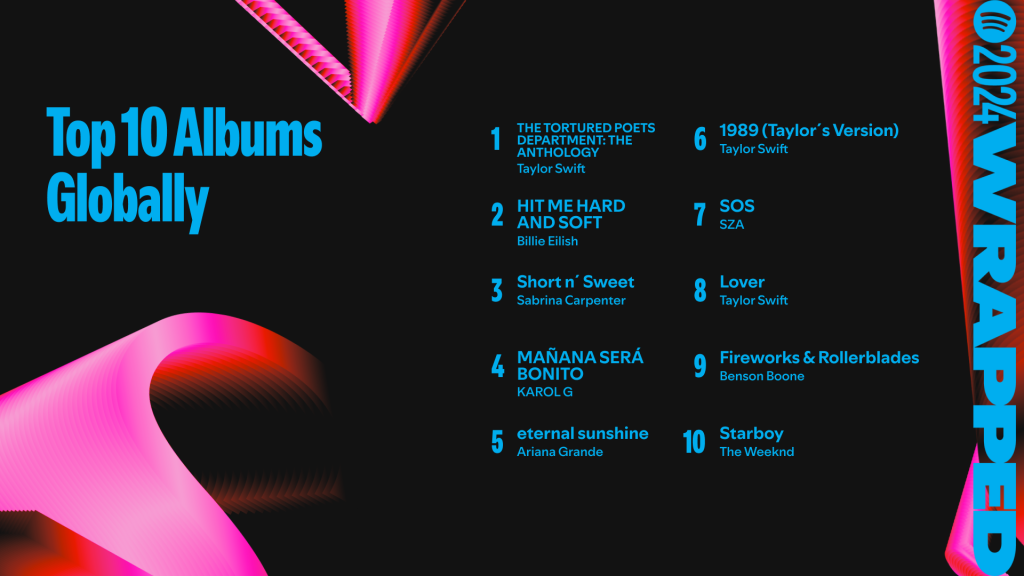
- THE TORTURED POETS DEPARTMENT: THE ANTHOLOGY by Taylor Swift
- HIT ME HARD AND SOFT by Billie Eilish
- Short n’ Sweet by Sabrina Carpenter
- MAÑANA SERÁ BONITO by Karol G
- eternal sunshine by Ariana Grande
- 1989 (Taylor’s Version) by Taylor Swift
- SOS by SZA
- Lover by Taylor Swift
- Fireworks & Rollerblades by Benson Boone
- Starboy by The Weeknd
Top Podcasts Globally
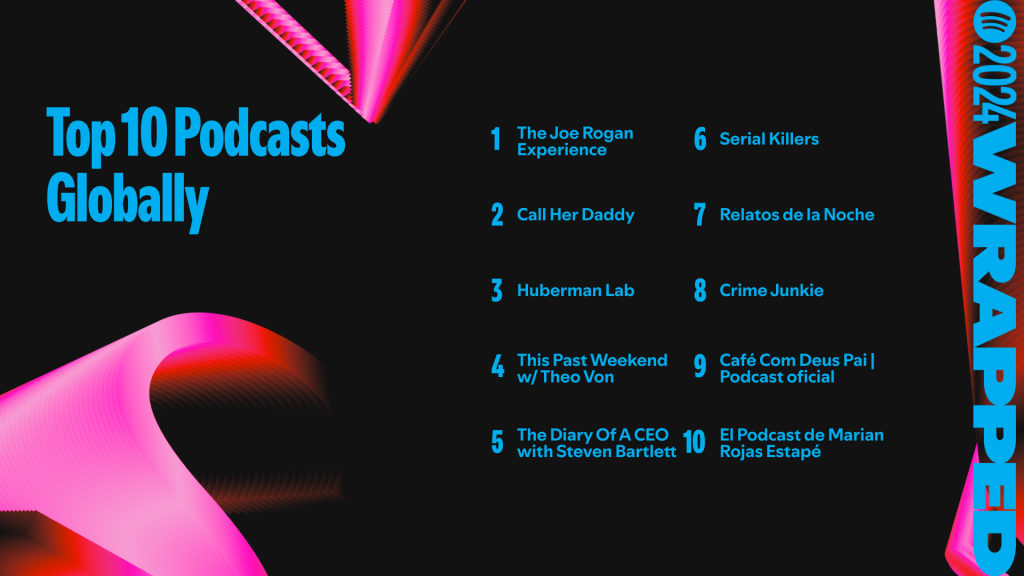
- The Joe Rogan Experience
- Call Her Daddy
- Huberman Lab
- This Past Weekend w/ Theo Von
- The Diary Of A CEO with Steven Bartlett
- Serial Killers
- Relatos de la Noche
- Crime Junkie
- Café Com Deus Pai | Podcast oficial
- El Podcast de Marian Rojas Estapé
Top Audiobooks in Premium Globally
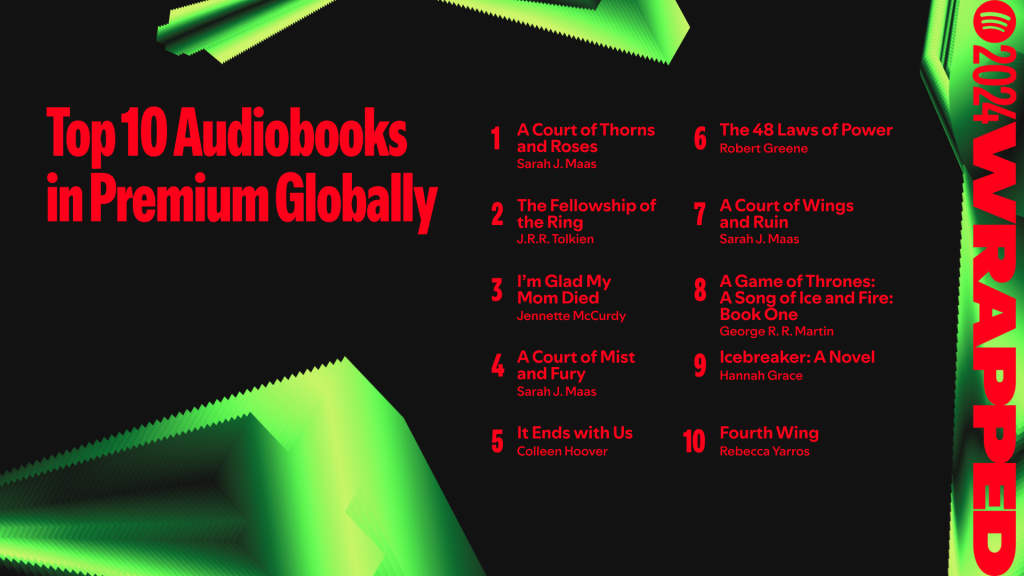
- A Court of Thorns and Roses by Sarah J. Maas
- The Fellowship of the Ring by J. R. R. Tolkien
- I’m Glad My Mom Died by Jennette McCurdy
- A Court of Mist and Fury by Sarah J. Maas
- It Ends with Us by Colleen Hoover
- The 48 Laws of Power by Robert Greene
- A Court of Wings and Ruin by Sarah J. Maas
- A Game of Thrones: A Song of Ice and Fire: Book One by George R. R. Martin
- Icebreaker: A Novel by Hannah Grace
- Fourth Wing by Rebecca Yarros
Most-Viral Songs Globally
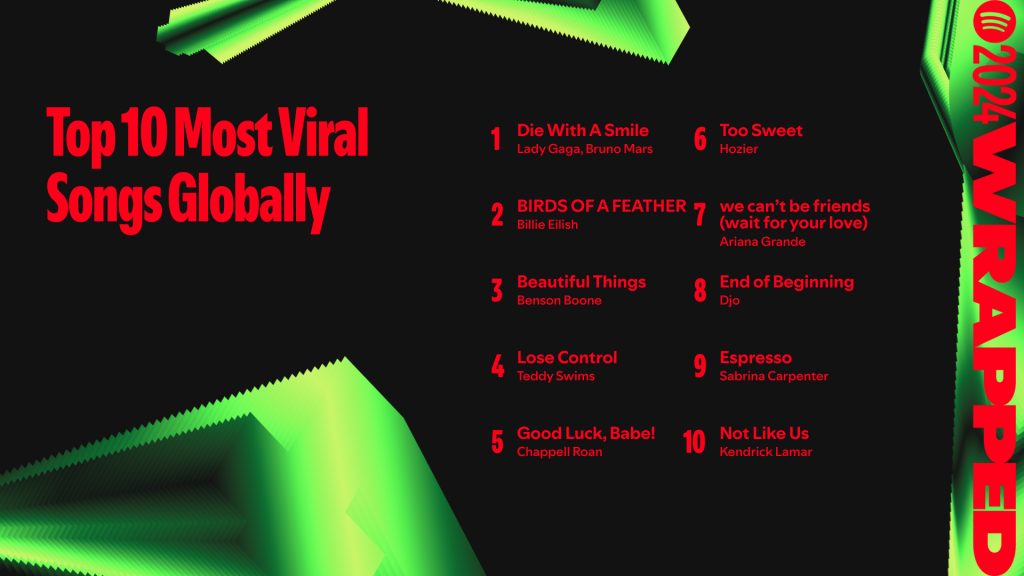
- “Die With A Smile” by Bruno Mars, Lady Gaga
- “BIRDS OF A FEATHER” by Billie Eilish
- “Beautiful Things” by Benson Boone
- “Lose Control” by Teddy Swims
- “Good Luck, Babe!” by Chappell Roan
- “Too Sweet” by Hozier
- “we can’t be friends (wait for your love)” by Ariana Grande
- “End of Beginning” by Djo
- “Espresso” by Sabrina Carpenter
- “Not Like Us” by Kendrick Lamar
Spotify 2024 Wrapped U.S. Top Lists
U.S. Most-Streamed Artists
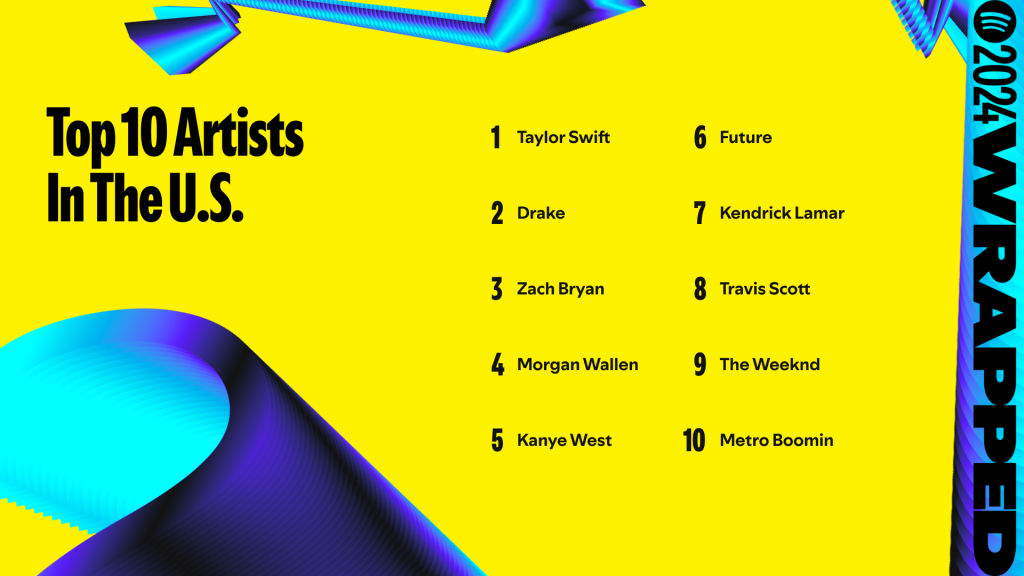
- Taylor Swift
- Drake
- Zach Bryan
- Morgan Wallen
- Kanye West
- Future
- Kendrick Lamar
- Travis Scott
- The Weeknd
- Metro Boomin
U.S. Most-Streamed Songs
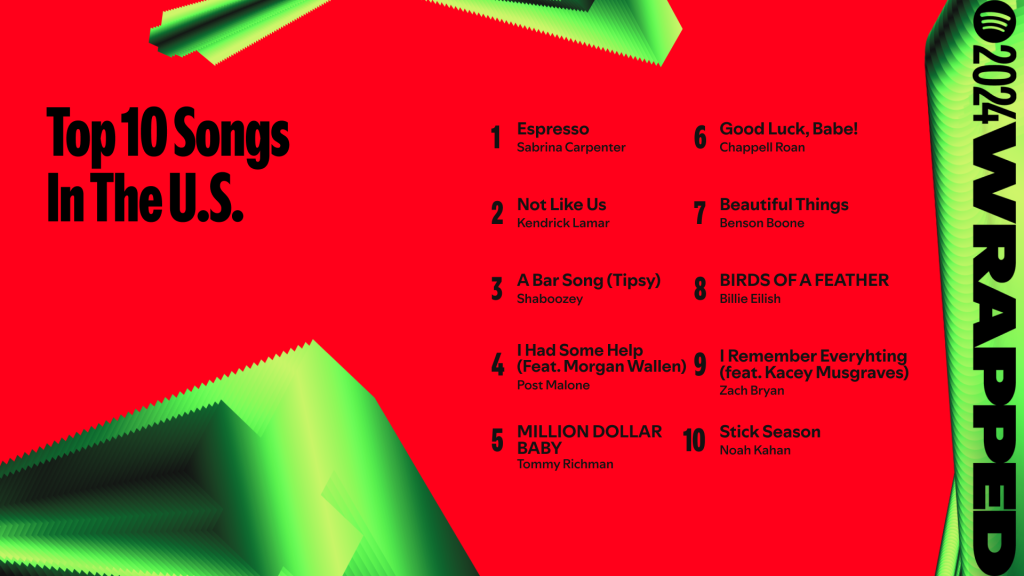
- “Espresso” by Sabrina Carpenter
- “Not Like Us” by Kendrick Lamar
- “A Bar Song (Tipsy)” by Shaboozey
- “I Had Some Help (feat. Morgan Wallen)” by Post Malone
- “MILLION DOLLAR BABY” by Tommy Richman
- “Good Luck, Babe!” by Chappell Roan
- “Beautiful Things” by Benson Boone
- “BIRDS OF A FEATHER” by Billie Eilish
- “I Remember Everything (feat. Kacey Musgraves)” by Zach Bryan
- “Stick Season” by Noah Kahan
U.S. Most-Streamed Albums
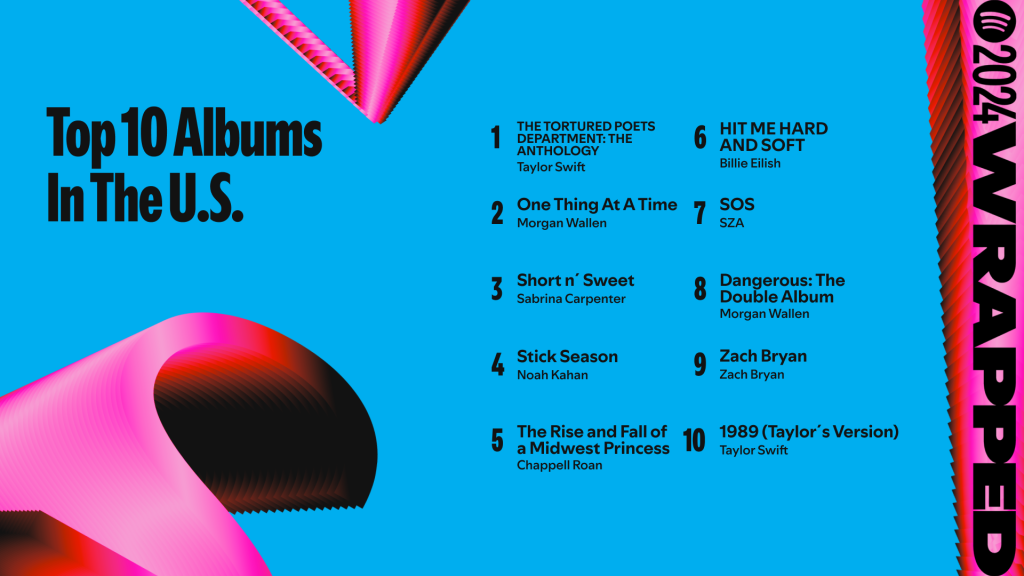
- THE TORTURED POETS DEPARTMENT: THE ANTHOLOGY by Taylor Swift
- One Thing At A Time by Morgan Wallen
- Short n’ Sweet by Sabrina Carpenter
- Stick Season by Noah Kahan
- The Rise and Fall of a Midwest Princess by Chappell Roan
- HIT ME HARD AND SOFT by Billie Eilish
- SOS by SZA
- Dangerous: The Double Album by Morgan Wallen
- Zach Bryan by Zach Bryan
- 1989 (Taylor’s Version) by Taylor Swift
U.S. Top Podcasts
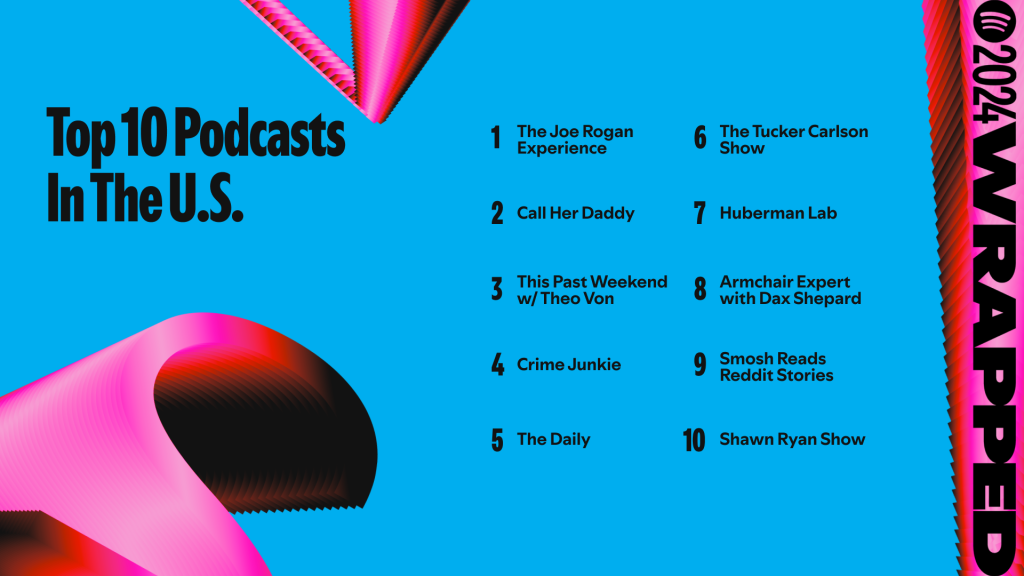
- The Joe Rogan Experience
- Call Her Daddy
- This Past Weekend w/ Theo Von
- Crime Junkie
- The Daily
- The Tucker Carlson Show
- Huberman Lab
- Armchair Expert with Dax Shepard
- Smosh Reads Reddit Stories
- Shawn Ryan Show
Top Most-Anticipated Podcast Launches in the U.S.
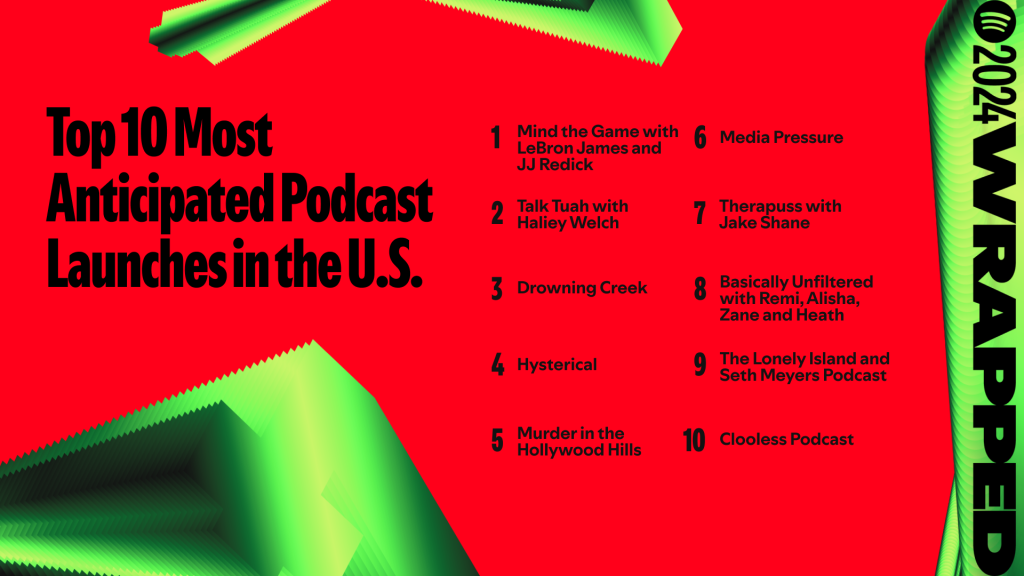
- Mind the Game with LeBron James and JJ Redick
- Talk Tuah with Haliey Welch
- Drowning Creek
- Hysterical
- Murder in the Hollywood Hills
- Media Pressure
- Therapuss with Jake Shane
- Basically Unfiltered with Remi, Alisha, Zane and Heath
- The Lonely Island and Seth Meyers Podcast
- Clooless Podcast
U.S. Top Audiobooks in Premium
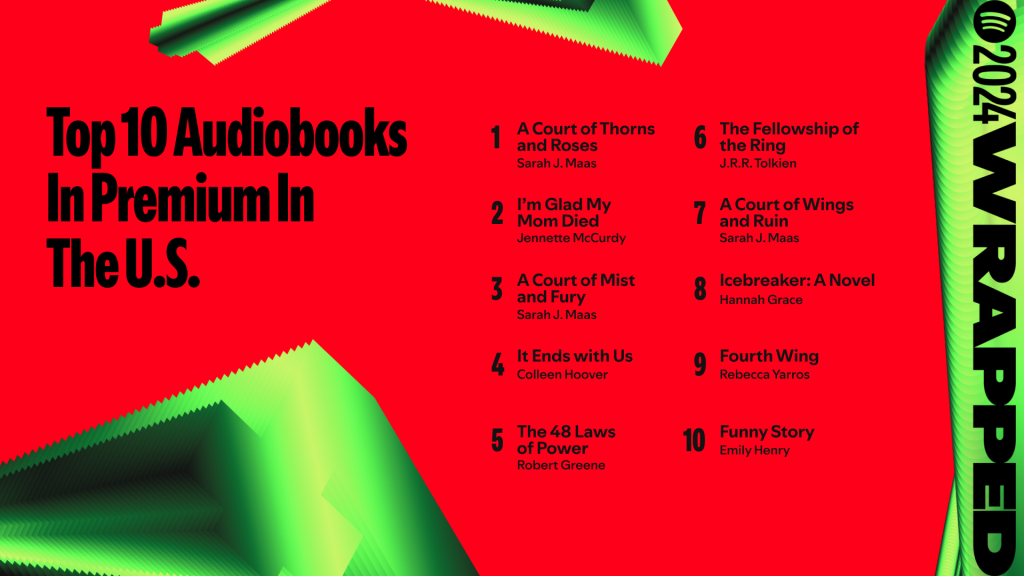
- A Court of Thorns and Roses by Sarah J. Maas
- I’m Glad My Mom Died by Jennette McCurdy
- A Court of Mist and Fury by Sarah J. Maas
- It Ends with Us by Colleen Hoover
- The 48 Laws of Power by Robert Greene
- The Fellowship of the Ring by J. R. R. Tolkien
- A Court of Wings and Ruin by Sarah J. Maas
- Icebreaker: A Novel by Hannah Grace
- Fourth Wing by Rebecca Yarros
- Funny Story by Emily Henry
Explore your personalized 2024 Wrapped and learn more about this year’s campaign and experience on our 2024 Wrapped hub.







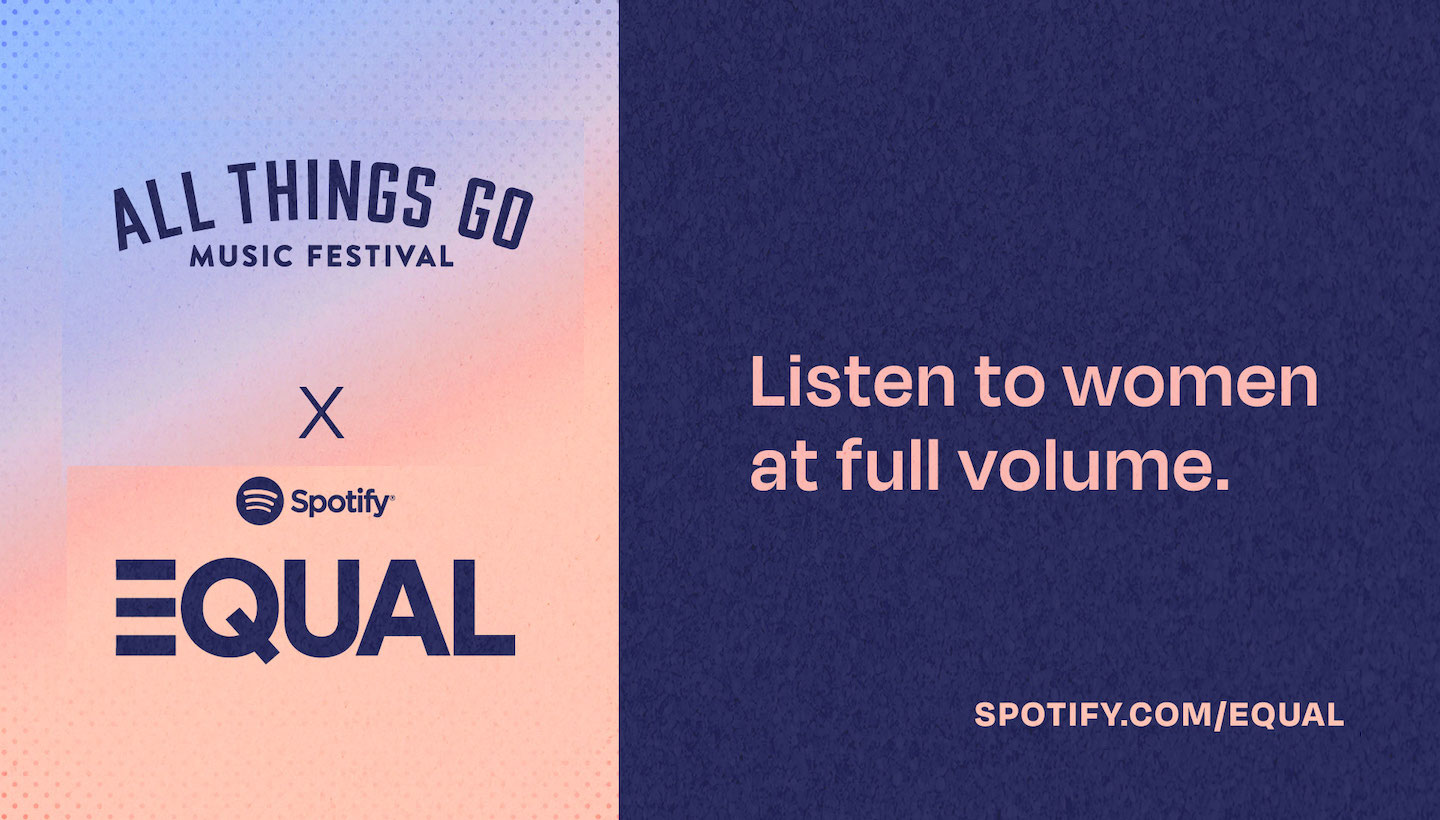
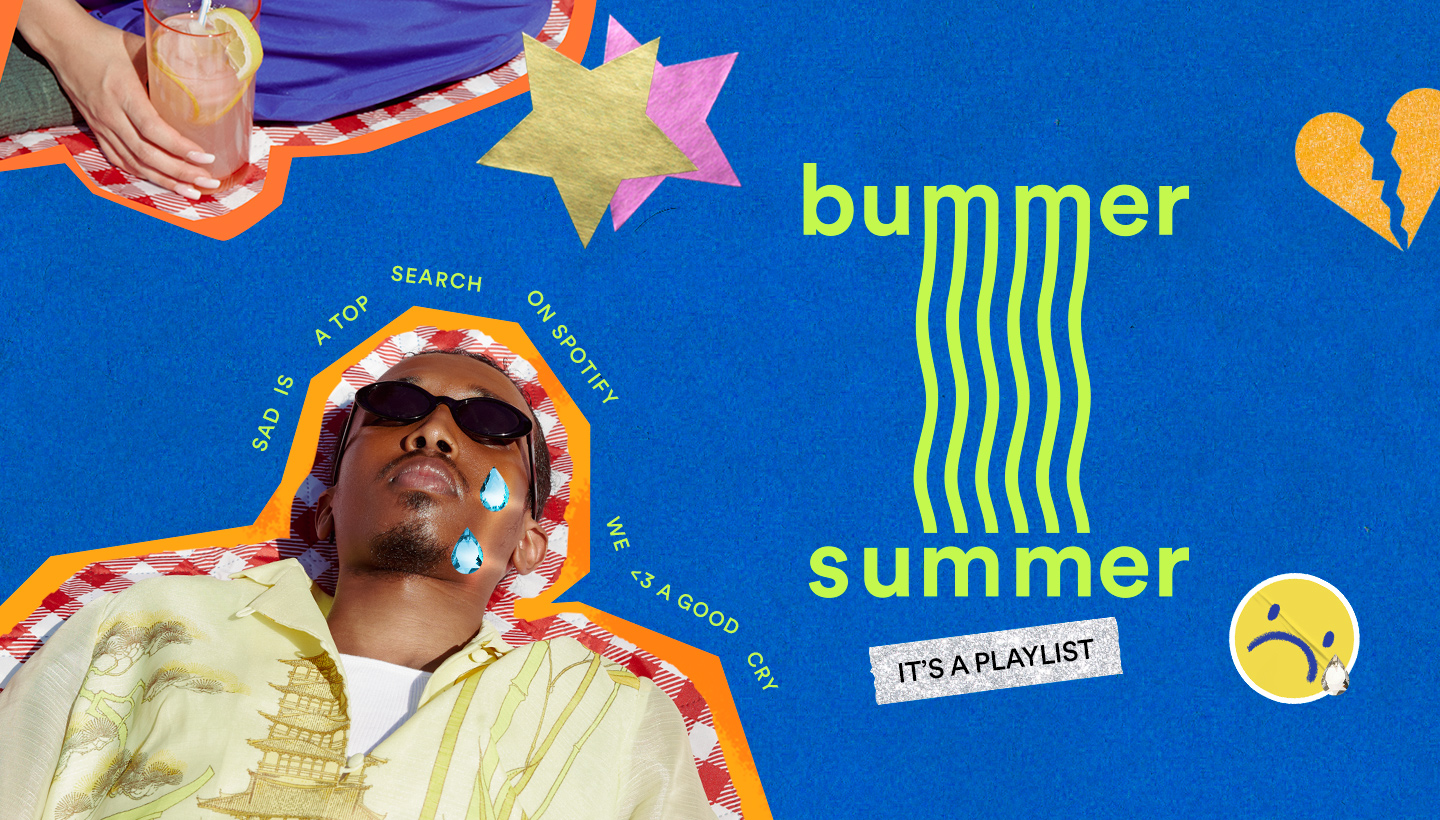
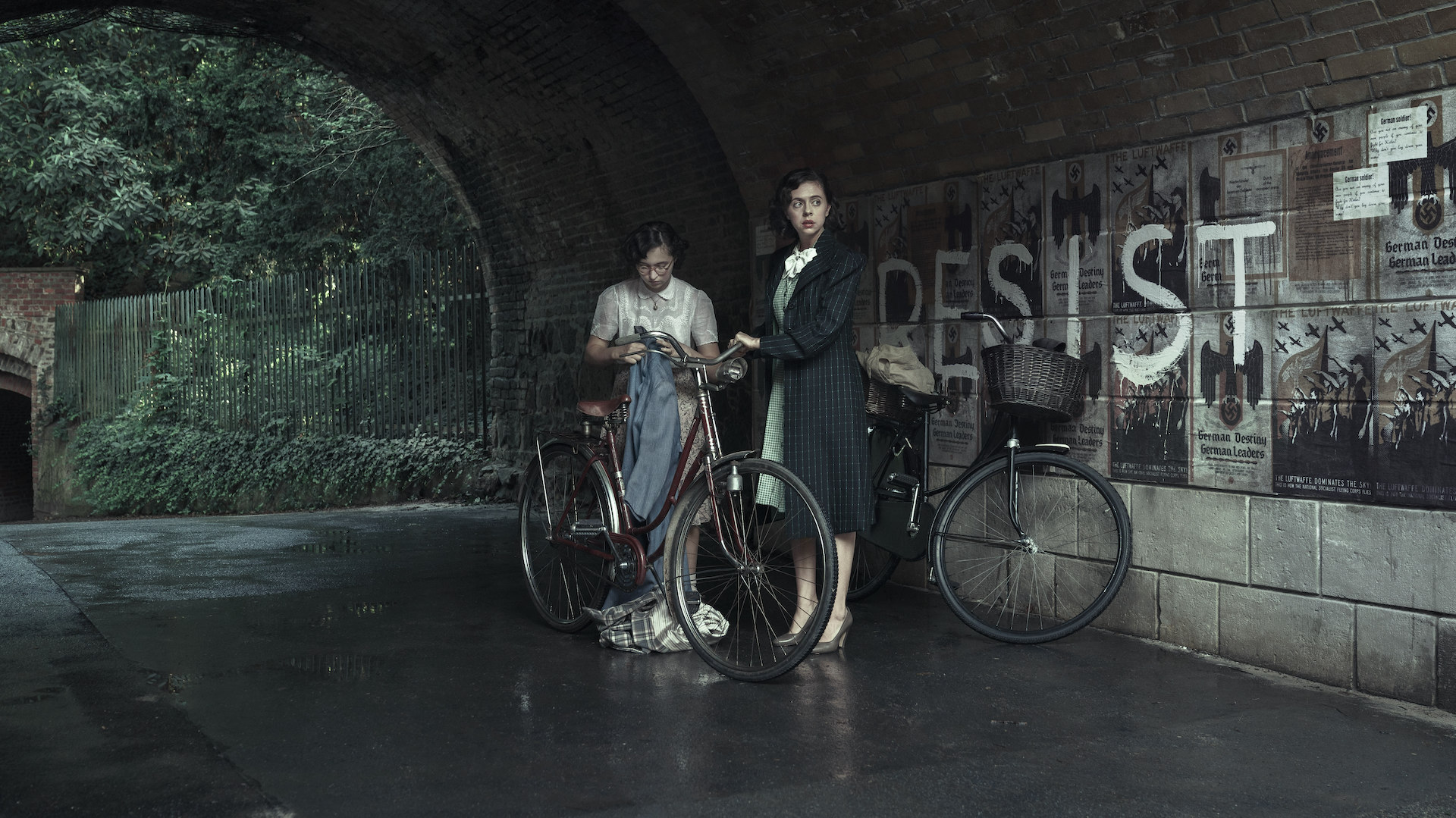
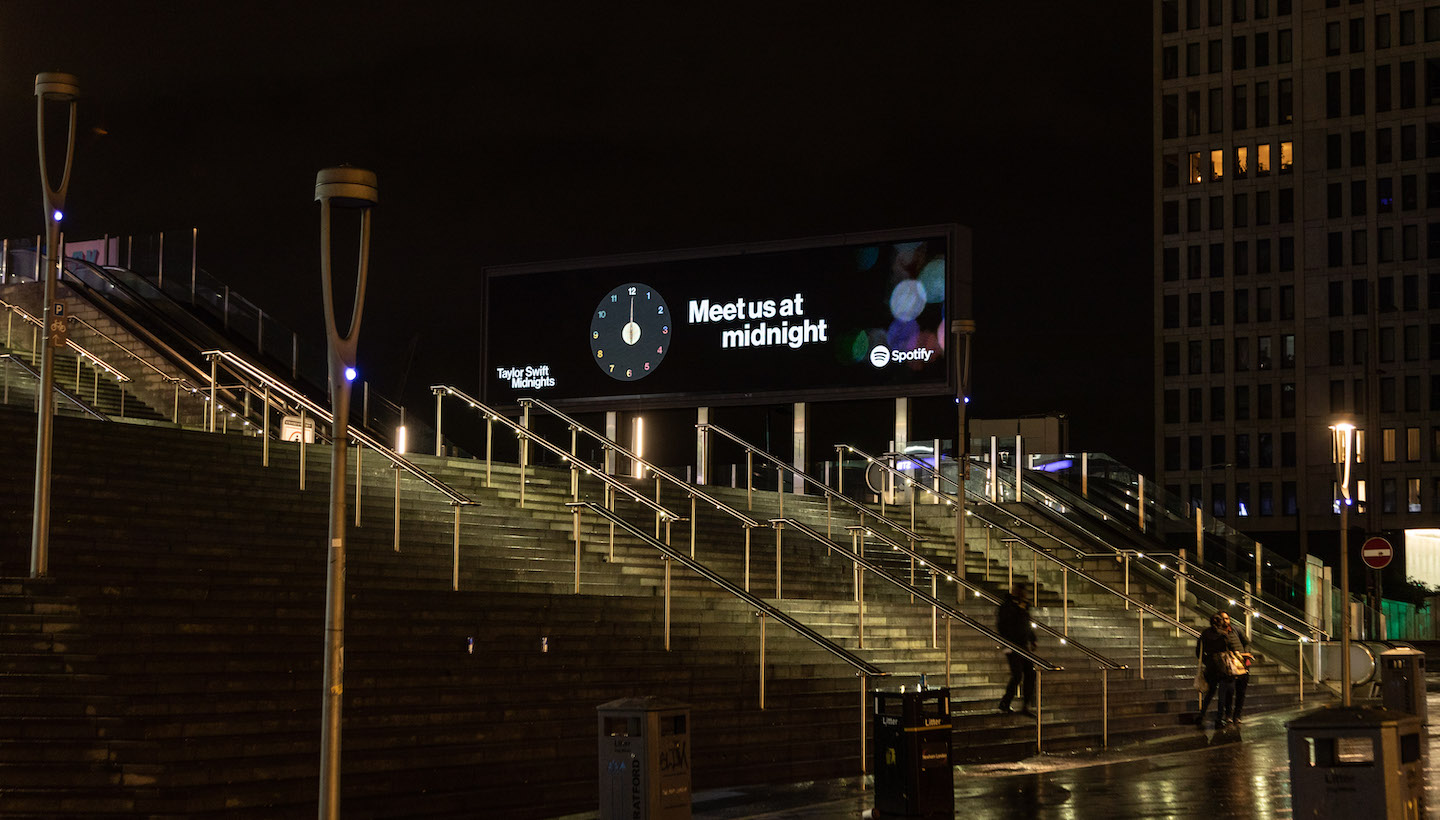
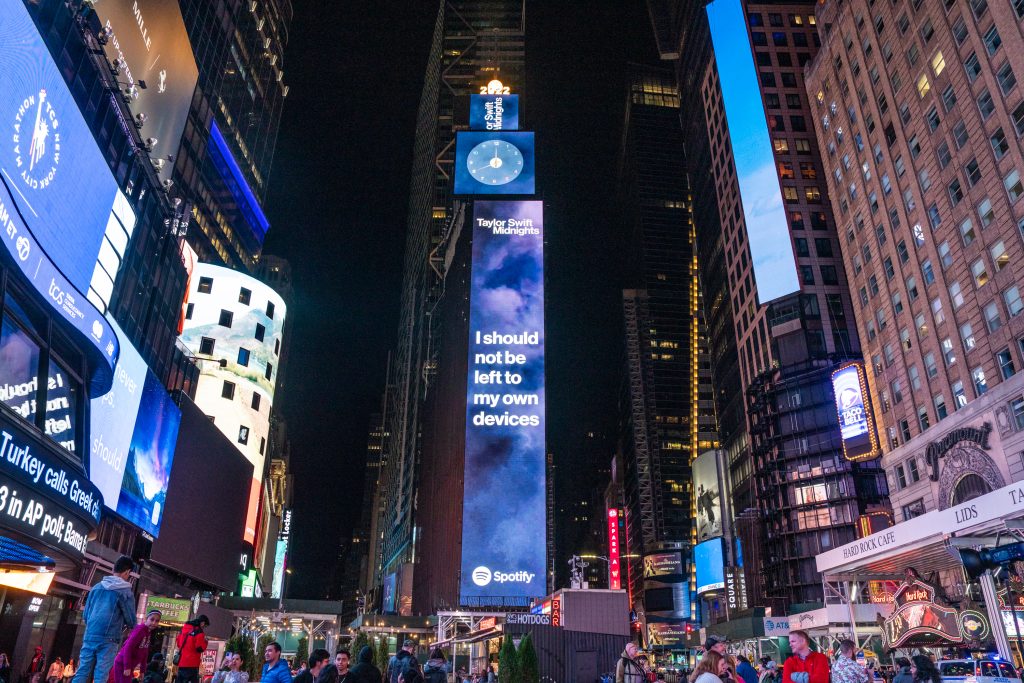
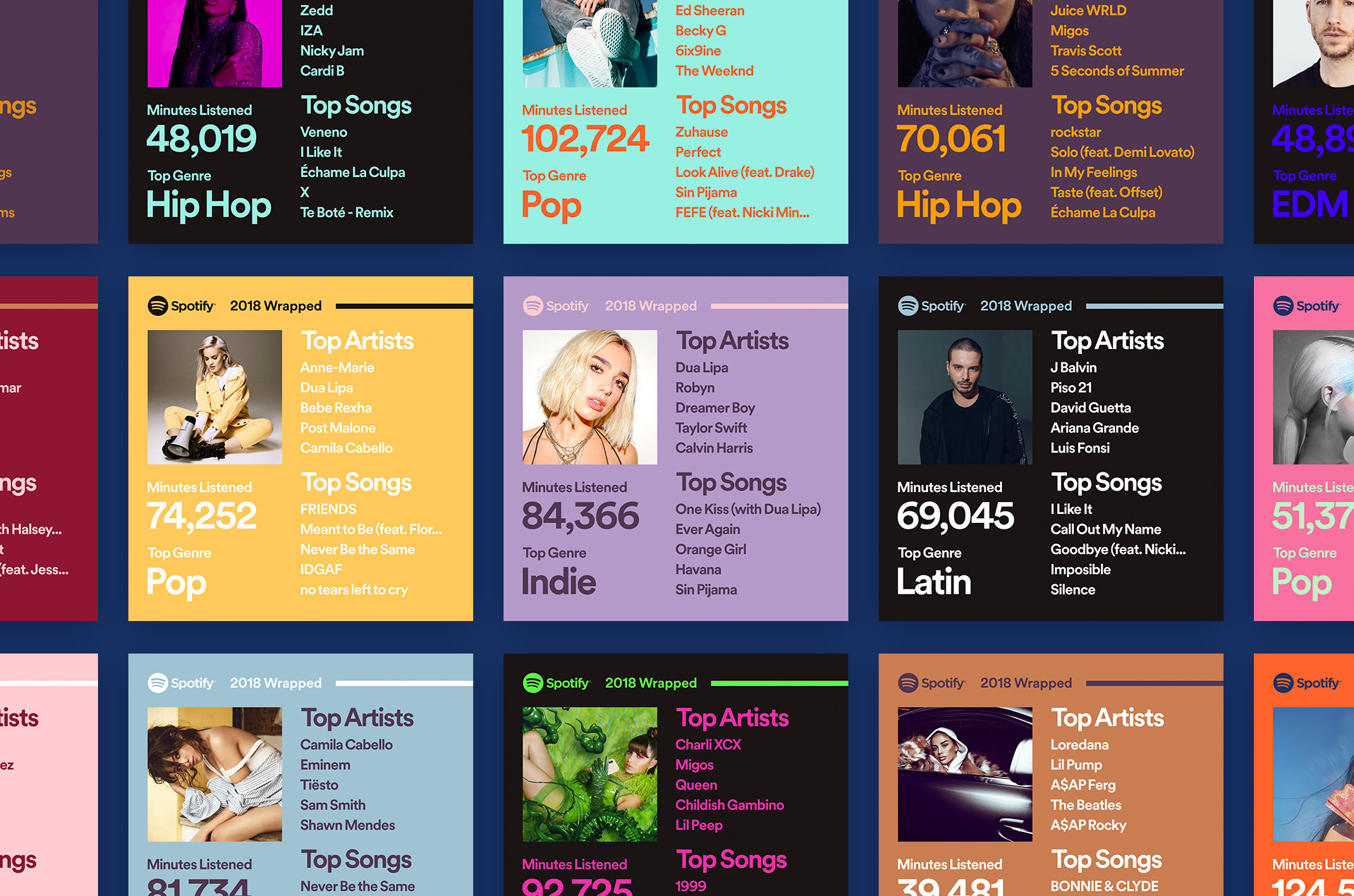
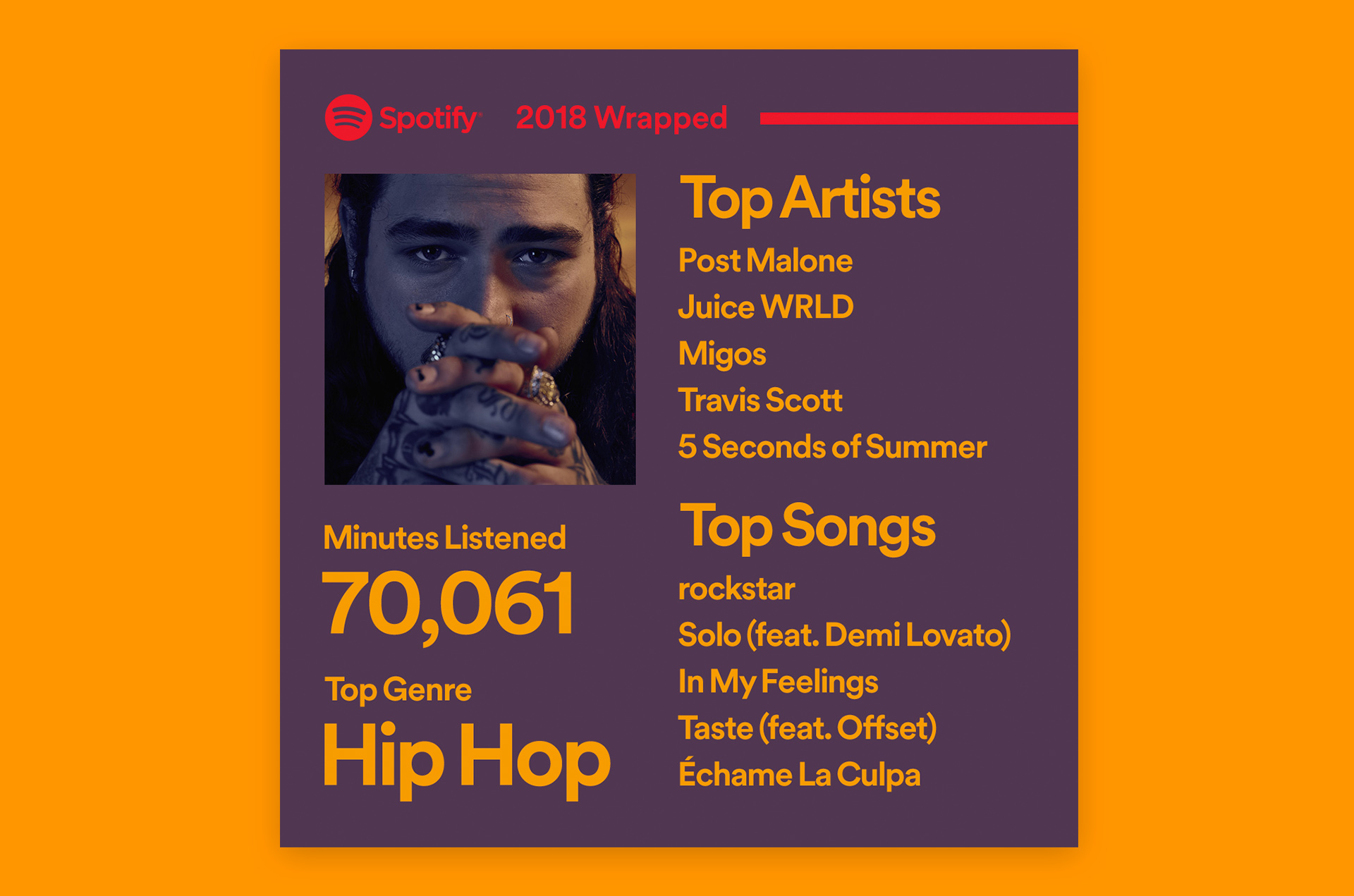
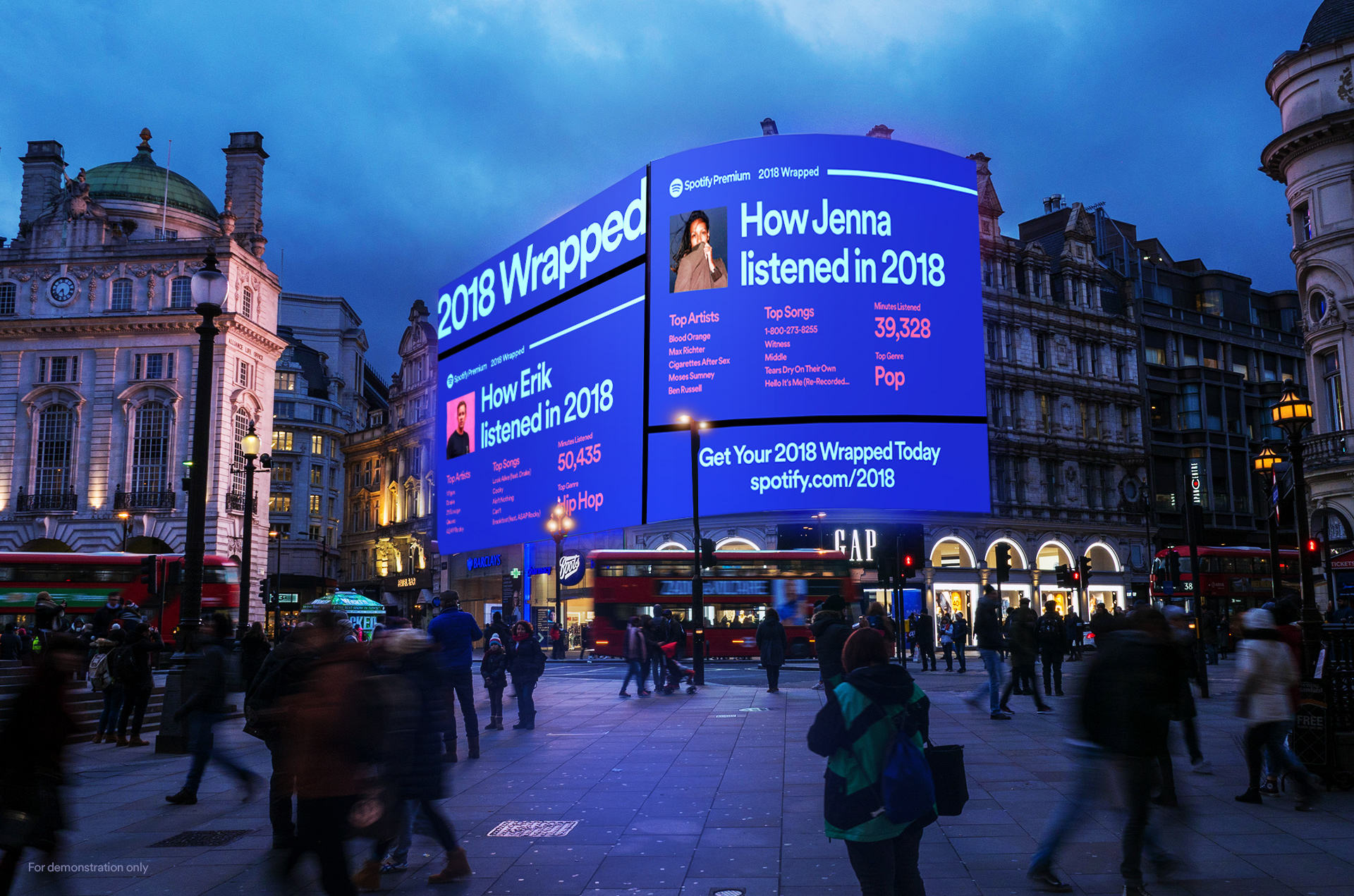
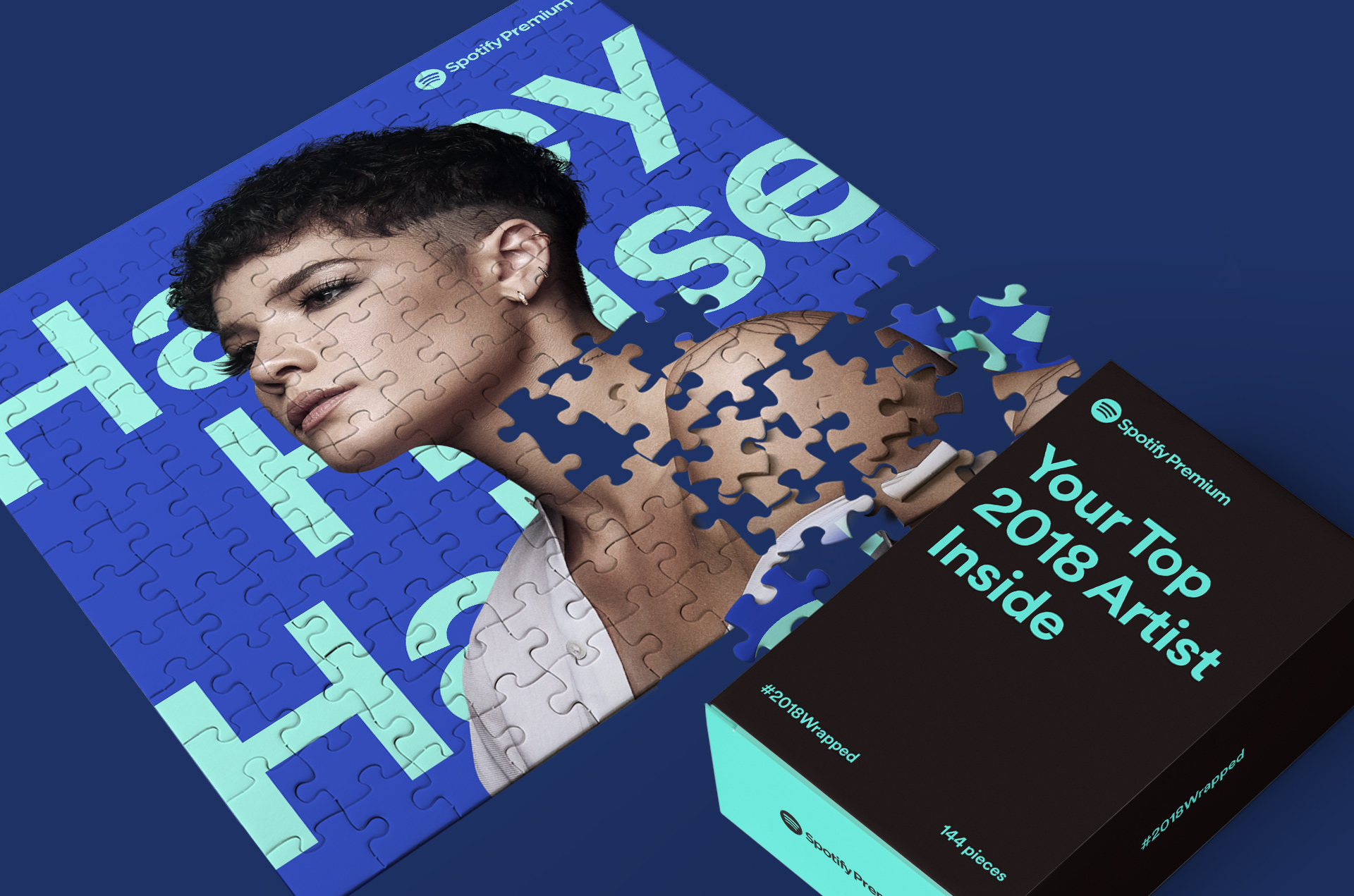
Recent Comments